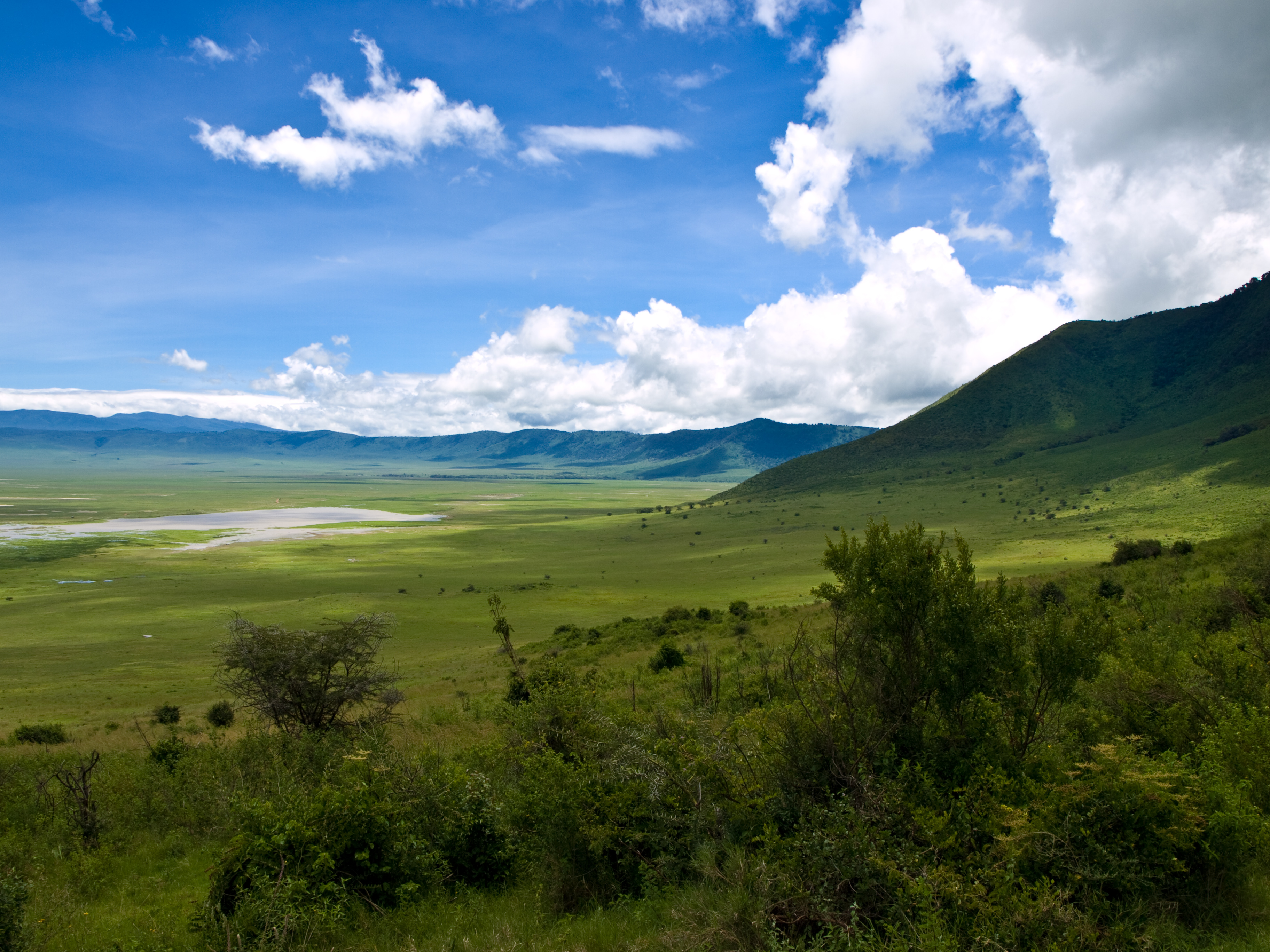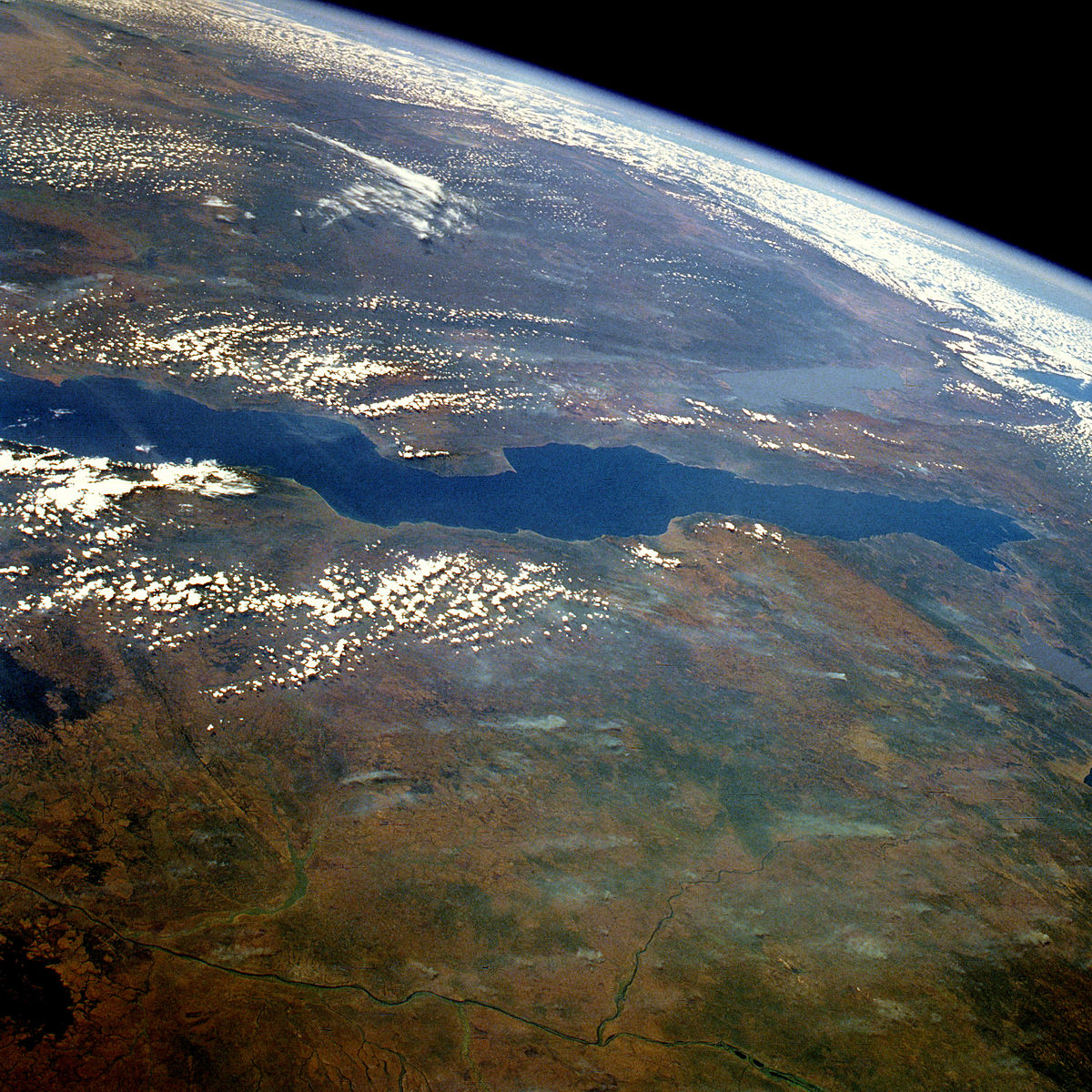More than almost any other destination, Tanzania is the land of safaris. Wildebeest stampede across the plains. Hippos jostle for space in muddy waterways. Elephants wander along seasonal migration routes and chimpanzees swing through the treetops. Throughout the country there are unparalleled opportunities to experience this natural wealth: take a boat safari down the Rufiji River past snoozing crocodiles in Selous Game Reserve; watch giraffes silhouetted against ancient baobab trees in Ruaha National Park; sit motionless as waterbirds peck in the shallows around Rubondo Island; and hold your breath while lions pad around your vehicle in Ngorongoro Crater.
Ngorongoro is one of the largest unbroken calderas in the world that isn’t a lake. Its steep walls soar 400m to 610m and provide the setting for an incredible natural drama, as prey and predators graze and stalk their way around the open grasslands, swamps and acacia woodland on the crater floor. It’s such an impressive sight that, other vehicles aside, you’ll wonder whether you’ve descended into a wildlife paradise. Ngorongoro is one of the largest unbroken calderas in the world that isn’t a lake. Its steep walls soar 400m to 610m and provide the setting for an incredible natural drama, as prey and predators graze and stalk their way around the open grasslands, swamps and acacia woodland on the crater floor. It’s such an impressive sight that, other vehicles aside, you’ll wonder whether you’ve descended into a wildlife paradise.
Tarangire is usually assigned only a day visit as part of a larger northern-circuit itinerary. But it deserves a whole lot more, at least in the dry season. This is a place where elephants dot the plains like cattle, and where lion roars and zebra barks fill the night, all set against a backdrop of constantly changing scenery. Tarangire has the second-highest concentration of wildlife of any Tanzanian national park (after the Serengeti) and reportedly the largest concentration of elephants in the world. The Tarangire ecosystem, with the park as its heart, also has more than 700 resident lions, and sightings are common.
Few people forget their first encounter with the Serengeti. Perhaps it’s the view from the summit of Naabi Hill at the park’s entrance, from where the Serengeti’s grasslands stretch out like a vision of eternity. Or maybe it’s a coalition of male lions stalking across open plains. Or it could be the epic migration of animals in their millions, following the ancient rhythm of Africa’s seasons. Whatever it is, welcome to one of the greatest wildlife-watching destinations on earth. On the vast plains of the Serengeti, nature’s mystery, power and beauty surround you as they do in few other places. It’s here that one of earth’s most impressive natural cycles has played itself out for aeons as hundreds of thousands of hoofed animals, driven by primeval rhythms of survival, move constantly in search of fresh grasslands.

Lake Tanganyika, spreading over a massive 34,000 sq km, and reaching almost 1500m deep, cavernous Lake Tanganyika is the second-deepest lake in the world and contains about 15% of the earth’s fresh water. Believed to be up to 15 million years old and lying in the Great Rift Valley, the shores of the lake reach Tanzania, Burundi, the Democratic Republic of the Congo and Zambia. The climate here is always very hot, especially at the end of the dry season.
Mt Kilimanjaro National Park spreads over a massive 34,000 sq km, and reaching almost 1500m deep, cavernous Lake Tanganyika is the second-deepest lake in the world and contains about 15% of the earth’s fresh water. Believed to be up to 15 million years old and lying in the Great Rift Valley, the shores of the lake reach Tanzania, Burundi, the Democratic Republic of the Congo and Zambia. The climate here is always very hot, especially at the end of the dry season.
Ol Doinyo Lengai, the northernmost (and youngest) volcano in the Crater Highlands, Ol Doinyo Lengai (2878m), and ‘Mountain of God’ in the Maasai language, is an almost perfect cone with steep sides rising to a small, flat-topped peak. It’s still active, last erupting in 2008. At the peak, you can see hot steam vents and growing ash cones in the north crater. Climbing the mountain is possible, but it’s a serious undertaking – you’ll need a guide, stamina and a head for heights.

